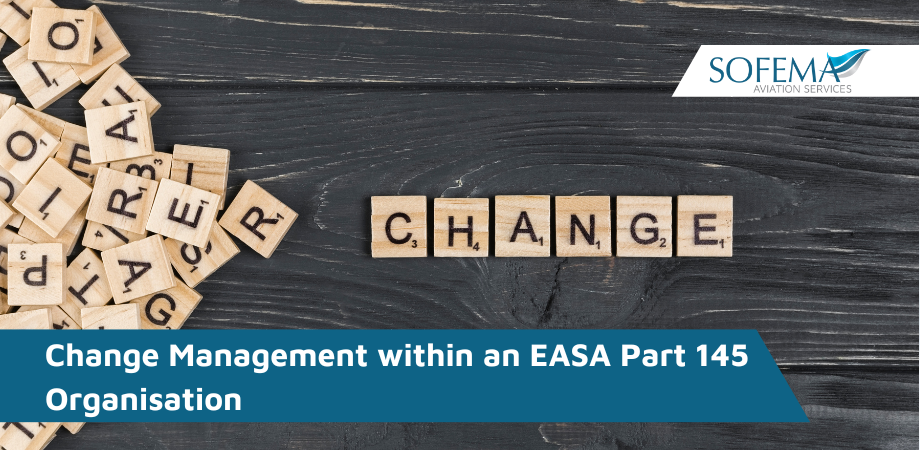Sofema Aviation Services (SAS) considers the challenges and complexities of Change Management in aviation.
Change Management in aviation – Introduction
We all accept that there will be constant changes both within our organisation (internal changes) and within the greater aviation system, (both internal and external) including:
» Regulatory changes,
» Management changes,
» Equipment changes,
» Changes in procedures process, or manning levels,
» Expansion or Contraction.
Management of Change Quick Check List
- Is the change fully described?
- Have we identified and documented all associated hazards?
- Have we risk-assessed all newly identified hazards?
- Do we have accepted Risk Controls in place related to the changes?
The Change Management Process should ensure that any hazards associated with the change are formally and systematically identified and managed and that a formal process exists to ensure the management of the change is continually evaluated and monitored.
All relevant business owners and stakeholders should be involved in the change process.
Ownership is the key to the best outcomes achieved when a single person is responsible to champion the change and the business area owner / post holder must sign off on any changes before implementation.
Safety Assurance should ensure that throughout the lifecycle of the change, management is presented with feedback regarding the effectiveness of the implemented processes as well as the overall health of the system.
Note – As part of a formal process of the management of change, the system description and the baseline hazard analysis should be reviewed periodically, even if circumstances of change are not present, to determine their continued validity.
What is contained within an SMS Change Management Process?
Within the change management process, we will typically expect a documented strategy to proactively identify and manage the safety risks that can accompany change. Whilst it is focused on significant change, in fact, any change may have a “knock-on” or trickle-down effect.
» An effective process will assess in fact all changes (Initially at a low level and where required in-depth).
» Changes may impact existing mitigations or introduce new risks and exposures and it is necessary to have a formal process to assess and measure the impact.
Note – The Change Management process should be fully integrated into the SMS Hazard and Risk Assessment Process.
» Any perceived safety risks connected to the “consequences” of identified hazards should also be analyzed assessed and mitigated where appropriate. Additionally, actions should be evaluated and measured for effectiveness.
Competence & when to use Subject Matter Experts?
The competence of the persons involved in the evaluation process is highly critical to the effectiveness of the process.
» Consideration should be given to ensure that stakeholders from all departments affected in the change have direct input into the evaluation process.
» In any event, a formal competence management process is expected.
Actions To Take
Consider the effectiveness of the various mechanisms which exist in your system:
» How are you able to measure this, essentially to consider that to achieve the maximum effectiveness then we should be able to demonstrate a measure against which we can assess each and every element.
Important Change Management Considerations!
- Ensure effective communication with all stakeholders.
- Ensure that you have sufficient available manpower to support the delivery of the objective – staged delivery is usually best.
- Safety Culture and the willingness to accept change reluctance to change can impede success or even worse!
Next Steps
Follow this link to our Library to find & Download related support documents.
Note – Sofema Aviation Services offers the following training in support of the understanding regarding development of an effective Safety Management System:
For additional questions or to register please email team@sassofia.com
Tags:
aviation, aviation safety, Aviation Safety Management System, Aviation SMS, Change Management, EASA Part 145 Organisation, Risk Assessment Processes, Risk Management, Safety Culture, SAS blogs, SMS Hazard




